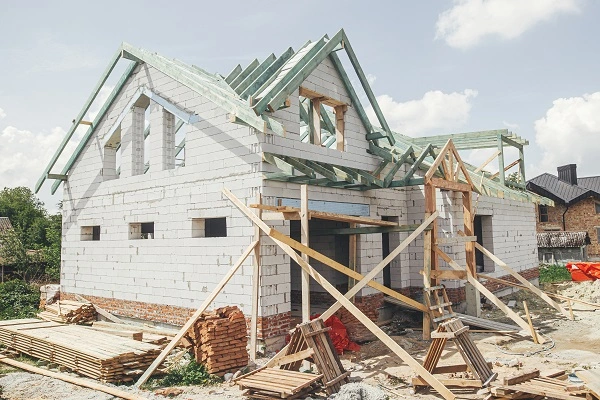Construction cost estimates provide the foundation of construction project bids and budgets. Owners use approximate and precise estimates to assess their projects’ viability and the total amount of funding required to bring them to completion. The accuracy of the construction cost estimating services, influences by how you estimate and manage your project. Identifying the budget can indicate early on if the task will pay out for you as the builder and provide the homeowner with a good outcome.
Depending on the information and data you have about the project, various approaches exist to create a cost estimate.
We’ll examine the various kinds of construction estimates, their creation processes, and how software may help you exceed your clients’ expectations.
Top 5 construction cost estimates to use
Preliminary Cost Estimates
A preliminary estimate comes handy early in a project, typically before the completion of design documentation.
Project owners sometimes rely on early estimates to get a ballpark idea of whether a project is financially feasible. They may utilize the preliminary estimate to ascertain whether they can finance the project with their current resources or how much funding they’ll need. A rough estimate frequently aids in deciding whether to take on a job before it takes up too much of your time.
A general contractor may, for instance, base a preliminary estimate for a new office building on previous structures of a comparable scale.
Detailed Estimates
As its name suggests, a detailed estimate entails dividing the project scope into more manageable unit costs that may be quoted separately. It covers the price of the labor, supplies, and machinery needed to finish the job. By adding these, you can get the project’s overall cost.
For a precise quote to happen you require a design documentation to be complete. That is where these estimates do their job.
The detailed estimate is based on the finished design papers and the labor cost that the contractor will have to supply. It is frequently the foundation for the contractor’s first building construction budget.
Quantity Cost Estimates
The basis of quantity cost estimates is how many number of units or amount do you require completing the project.
Measurable components are how you sum up. By adding the expenses for each of the elements provide clarity to what you are dealing with.
A quantity estimate is by counting or measuring the number of labor hours and materials you may incur to finish the project. Every work unit and the supplies have a uniform cost. Usually, a takeoff quantifies all of this.
Bid Cost Estimates
A bid estimate is a cost estimate that a possible client to win the project. It contains all the contractor’s project-related expenses, together with the assigned overhead costs and profit margin.
Since the bid estimate is frequently the final estimate that serves as the foundation for the building contract, it is crucial to consider those two factors when creating a bid cost estimate. The contractor’s breakdown of the building costs, plus markups for profit, overhead, and contingencies, form the basis of the bid estimate.
Control Cost Estimates
The budget estimate for financing, the cost after contracting but before building, and the cost to complete throughout the project are the three estimates. These make up a control estimate to monitor the project during construction. These budgets change in real time as subject to client change orders and actual expenses spent.
Control cost estimates comes into three elements.
Historical Cost Estimation
A historical estimate is a cost evaluation of previous projects. It is usually utilized in residential building. It starts when there isn’t much more to say and may be more accurate.
Parametric Cost Estimates
In a parametric estimation, the standard per-unit rate is multiplied by the dimensions to get the overall estimate. It’s better than earlier projections.
Bottom-up Estimates
After estimating the simpler ones using a bottom-up method, the contractor adds the cost for the more challenging jobs. In this instance, we assess each service’s pricing separately. Consequently, one may clearly understand the cost. Because it requires great effort, this construction estimator should only be used when all the necessary data is available.
What else impacts a cost estimate?
The following is the estimation process for materials, labor, equipment, subcontractors, and project overhead costs:
Costs of Materials
Material costs are by making a quantity takeoff (QTO) of all the materials that come into play for a project. After analyzing the building plans during the QTO, the estimator groups the necessary materials by supplier type.
After then, suppliers get the material lists from the QTO for quote purposes. Multiplying the material amounts by the unit prices from the chosen vendors yields the material cost. The estimate includes the total material costs broken down by cost code.
Labor Expenses
The hours to install the materials during the QTO are estimated to calculate labor expenses for internal teams. The crew’s expected productivity determines how many work hours are needed. In a workday, a clock hour, or a labor hour, productivity is the amount of materials the team can install.
Historical data from completed projects is the best source for productivity rates. Historical data helps to prevent excessively high or low work hours while estimating.
Multiplying the work hours by the crew’s average hourly burdened wage rate yields the labor expenses.
Equipment Prices
The cost of the equipment is calculated by multiplying the number of hours it is necessary for any project by an hourly rate that accounts for its ownership and operating expenses.
The expected yearly expenses of the equipment divided by the anticipated number of hours it will be utilized annually should be the basis for determining its hourly costs. The actual costs from the previous months will help keeps costs to a bare minimum.
Subcontractor Expenses
You must send requests for quotes to prequalified subcontractors to ascertain their expenses. The estimate includes the best subcontractor quotes for every cost code. Bids must be leveled when varying scopes of work come into play. Bed leveling is adjusting bids to equalize their work scopes by adding or removing items.
Conclusion
Construction estimating services are a combination of science and art. Skill is crucial when unavailable. Understanding the various construction cost estimation techniques available to you and your company is essential for successful estimating.




